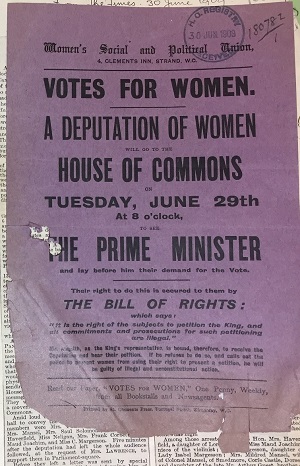
Women’s Social and Political Union flyer advertising a deputation to the House of Commons on Tuesday 29 June, 1909. Reference: HO 144/1038/180782.
Do you think you might have a relative who supported the campaigns for women’s suffrage? Here are some tips to start your research.
The National Archives’ records chart the evolution of rights and democracy from Magna Carta to Chartism, women’s suffrage and beyond. In particular, we hold a world renowned collection of documents relating to the 20th century part of the women’s suffrage movement.
The best place to begin is our women’s suffrage research guide, but you may also want to ask yourself the following questions:
Were they a suffragist or suffragette?
There were principally two categories of campaigner:
- Suffragist – non-militant campaigners were known as suffragists. The largest suffrage society was the non-militant National Union of Women’s Suffrage Societies (NUWSS).
- Suffragette – militant suffrage supporters were known as suffragettes. The most well-known militant society was the Women’s Social and Political Union (WSPU). Some societies, such as the Women’s Freedom League (WFL), used forms of non-violent direct action.
Often though, the government used the terms interchangeably or not at all, so it is worth being aware of this in your research.
The National Archives’ collection is a rich source of information about the government’s response to militant activities and civil disobedience such as destruction of property, tax evasion and census boycotts.
Peaceful protest was of less concern to the government, meaning there are less records relating to these campaigns. Large demonstrations drew the attention of the authorities even where they were orderly and peaceful. In general, however, you will find more records relating to militant activity. It is important to be aware of these parameters before undertaking research on suffrage ancestors.
If your relative was a militant campaigner you are far more likely to find records relating to their suffrage campaigns in our collections.
Were they arrested for their activism?
If they were arrested for their campaigns in support of women’s suffrage there is likely to be more of a government paper trail that survives in relation to them. Our records show 1333 suffrage supporters were arrested for their activism many multiple times, over a number of years and at locations all over the country.
- Home Office Index of Suffragettes Arrested. Reference: HO 45/24665.
- Part of section B in the alphabetised Home Office Index of Suffragettes. You can search by name or browse the register. Reference: HO 45/24665.
This is recorded in the Home Office index of Suffragettes Arrested, which was originally created and used by the Home Office to trace cases of suffrage supporters, and for their convictions to be linked. It contains the names of 1224 women and 109 men. Therefore, it can be a really valuable tool for researching suffrage ancestors or campaigners in your local area. This index is therefore the best way to look for individual campaigners whose activity put them on the wrong side of the law.
It was originally a working card index, and written up into the current form in 1922. One of its purposes was to help administer the amnesty of suffrage campaigners, who gave up militant campaigns and were released from prison, at the start of the First World War.
You can search or browse the index of suffragettes arrested between 1906 and 1914 (HO 45/24665) on Ancestry (£).
Each entry includes a reference to the original documents (not available online) relating to that person’s arrest and conviction. Where these documents have survived, you can find them by searching Discovery, our catalogue, using the code ‘HO’ followed by the reference number.
Example
For example, if you were looking for your relative Janet Bunton, you would be able to use the index to find out her date of arrest and any corresponding Home Office files that survive.
Using the internal Home Office number in the final column it is possible to use this in the advance search field in Discovery, with the department code ‘HO’ in the reference field. This shows you that a file does survive regarding her arrest, HO 144/1040/182628. The catalog describes the file as relating to Charlotte Despard and others, who were arrested for obstructing police officers in September 1909.
It is a great resource to research lesser known suffrage campaigners that may have otherwise been forgotten and not made the headlines themselves, despite their dedicated activism.
Clemence Housman is listed in the index in 1911.
She refused to pay her taxes. As part of the Women’s Tax Resistance League, she campaigned under the motto ‘No Vote, No Tax’, and was therefore sent to prison.
Using the number in the index, it is possible to locate her Home Office file, HO 144/1169/214572, which is listed with the description ‘Imprisonment of a Suffragette who refused to pay taxes so long as women were unrepresented’.
Listed underneath her entry on the index is her brother, Laurence Housman, who also campaigned for women’s right to the franchise. It is not just women who are listed – over 100 men are listed for their suffrage activism. Maybe your male relative supported the suffrage cause? Peter Barratt discovered his great-grandfather was a suffragette, too.
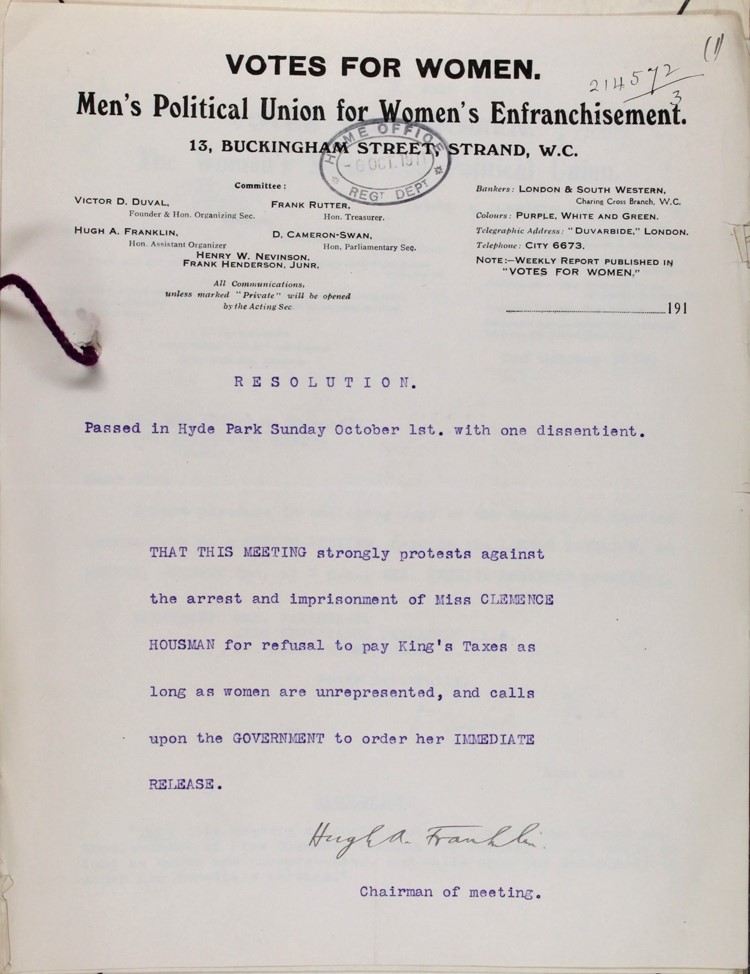
Letter of protest against the imprisonment of a Suffragette who refused to pay taxes so long as women were unrepresented. Reference: HO 144/1169/214572.
Were they known to have been involved in a certain moment or suffrage campaign?
Another way to trace suffrage supporters is to do more general searches within our catalogue. You could search for ‘suffragist’, ‘suffragette’ or ‘suffrag*’ or alternatively you can search for offences committed; common ones are ‘window smashing’, ‘disturbances’ and ‘demonstration’.
For example, if you suspect your relative was involved in the Black Friday protests of November 1910, you could use the key word search and date range function to look for records relating to this.
You could refine the results by date or government department depending on what you are looking for. The departments that managed the response to suffrage campaigners were vast – such as the Treasury investigating tax resistance as a form of protest or the Prison Commission who investigated prison treatment of suffragettes.
As well as using the index you can search by name various records series on FindMyPast.
Was your ancestor a peaceful suffrage campaigner?
Another way of tracing campaigners is through the 1911 census. This can provide information or sometimes an absence of information, to help you work out if your relative was a suffrage supporter.
Some suffrage supporters refused to participate in the 1911 census on the grounds that if they were not treated as citizens with a voice, they would not be counted on the census. Others made protest statements on the census forms and some enumerators made comments of their own.
Societies supporting the census included the Women’s Freedom League and the Women’s Social and Political Union. However, suffrage supporters often decided whether to comply or resist on an individual basis.
Search the 1911 census for records of suffrage campaigners and supporters. The census is available on Ancestry (£) and Findmypast (£).
Try searching the census using:
- the names or addresses of known suffrage supporters
- ‘anonymous’ in the name field
- phrases such as no vote no census’ in the keyword field, which was one of the key slogans of the campaign
- wildcard searches in the occupation or keyword field. A search in Ancestry (£) using the wildcard ‘suffrage*’ finds numerous results.
The various suffrage unions often had paid, as well as voluntary organisers across the country. It is therefore also possible to do a speculative search for a suffrage organiser, using the occupation field.
Using the word ‘suffrage’ to search in this field.
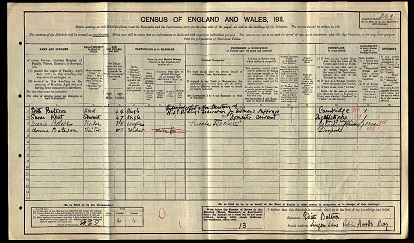
Edith Bateson as listed on the 1911 census, as 44, head of the household and a Professional Artist & Hon Secretary to a local Federation for Women’s Suffrage.
So we can see here Edith Bateson is described here as 44 and head of the household. She is also a Professional Artist & Hon Secretary to a local Federation for Women’s Suffrage. Searching on the census is more likely to highlight members of other suffrage societies.
Other sources
There are many other really great suffrage resources to use in your research.
As this blog has hopefully demonstrated, The National Archives’ records are most likely to shed light on campaigners who in some way interacted with the interest of government, for example census evasion, militant protests, window smashing, arson campaigns or tax evasion.
Do take a look at these sources too:
- The Parliamentary Archives women and the vote pages
- Woman and her Sphere
- Women’s library
- Suffrage newspapers
- Votes for Women has been digitised: https://google.com/newspapers?nid=IMJZBBnUFLgC
Good luck discovering your suffrage ancestors! Please do share anything you find in the comments.
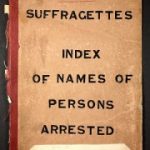
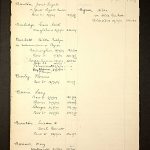
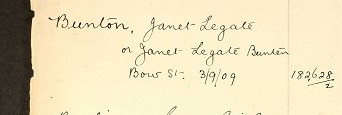
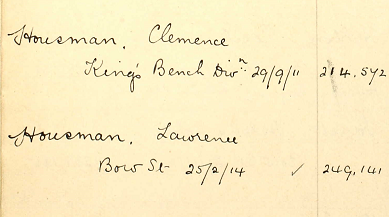

Not all of the Suffragettes arrested were women, there are men. Care should be taken as the list of those arrested includes William Ernest Bethell whom one of his brothers, Walter, had lied about as did “The Suffragette” and “Votes for Women” newspapers to state William had died following a meeting in Camberwell in November 1913. The police established William was never there and was actually in Canada still alive, neither was he interred in Brockley cemetery as stated by his brother. In other words don’t always believe what is written down is the truth.
David, as Vicky (quite clearly) states in this blog and as we have included in some of our previous blogs, our onsite exhibition and onsite programming for our suffrage season, men did play a part in the wider suffrage campaign. We have clearly and consistently stated this. Some were arrested, others campaigned and supported in other ways. As I have stated before, we are proud to have commemorated and celebrated the suffrage centenary which saw some women get the right to vote in Britain in 1918. This is part of our continued commitment to raising the profile of diverse histories which our collections cover.
I should have said his name was William Edward Bethell.